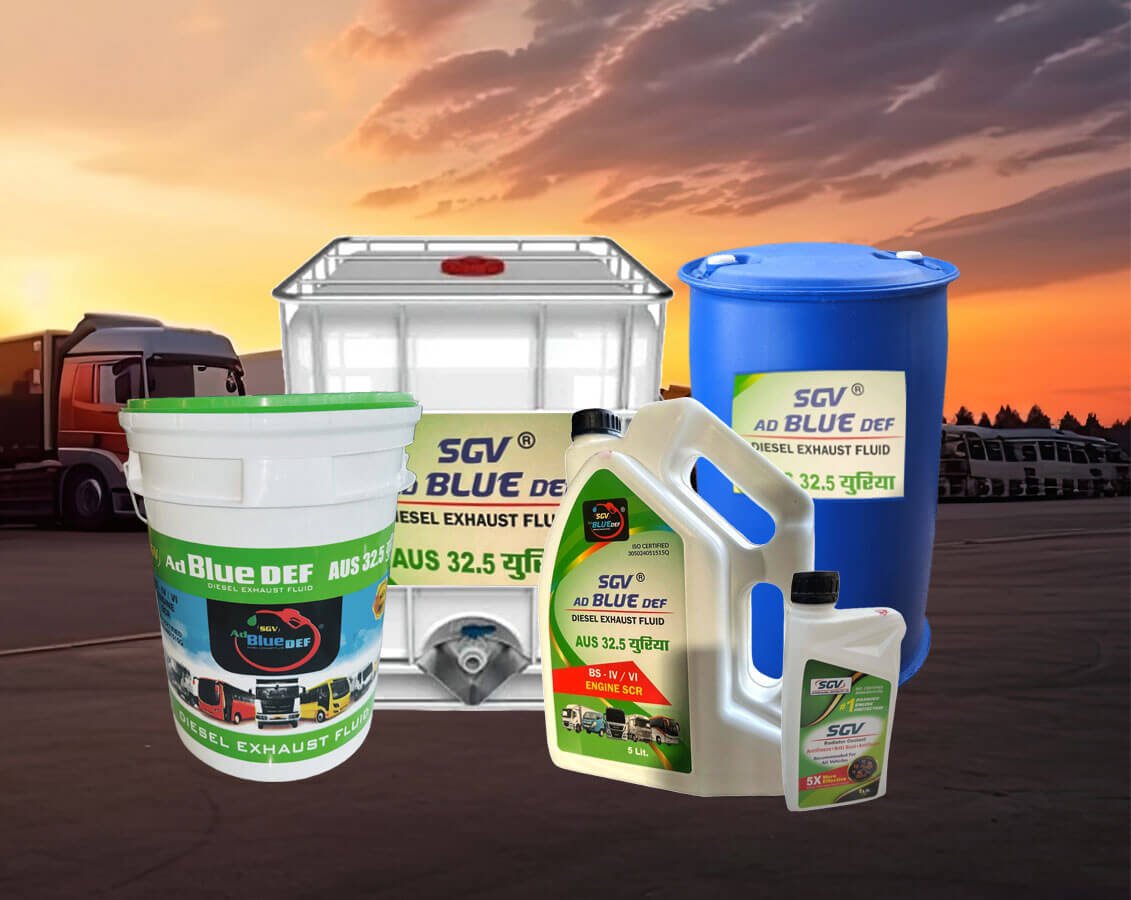What is Adblue?
Numerous contemporary diesel vehicles employ AdBlue to comply with emission standards. This pertains not only to trucks, heavy commercial vehicles, ships, mining and construction machinery, and tractors but also extends to various categories of passenger cars. However, what exactly is AdBlue, and how does it function? This page will delve into these details for a comprehensive understanding.

What Adblue does?
AdBlue, officially known as AUS32 or Aqueous Urea Solution 32.5%, is a meticulously purified diesel exhaust fluid (DEF). It is legally mandated for use in Heavy Goods Vehicles exceeding 7.5 tonnes and diesel engine cars equipped with Selective Catalytic Reduction (SCR) technology.
What is AdBlue fluid made of?
AdBlue is an inert, non-flammable, and odorless solution comprising 32.5% high-purity urea and 67.5% deionized water.
Why is AdBlue required?
AdBlue is employed in vehicles featuring a Selective Catalytic Reduction catalyst, known as SCR. The SCR catalyst plays a crucial role in treating exhaust gases before their release from the vehicle. A significant portion of heavy-duty vehicles compliant with Euro 4, Euro 5, and Euro 6 standards are equipped with SCR systems, necessitating the use of AdBlue. This holds true for a majority of trucks manufactured post-2005, while the initial introduction of passenger cars with diesel engines and SCR systems occurred in response to the Euro 6 standard in 2014.
Positioned after the particulate filter in the exhaust system, the SCR comes into action when a specified amount of nitrogen oxides (NOx) seeks entry into the catalyst. At this point, a precise quantity of AdBlue is injected from the AdBlue reservoir. Within the SCR catalyst, AdBlue undergoes conversion into ammonia and a minimal amount of carbon dioxide. The resultant ammonia reacts with the NOx, generating non-hazardous substances, namely nitrogen and water. The SCR catalyst ensures the swift and effective occurrence of this reaction.
What does AdBlue do?
As emission standards have evolved, AdBlue has emerged as a pivotal component in mitigating the release of nitrogen oxides (NOx) from engines. This holds true not only for transportation vehicles but also for off-road vehicles and passenger engines. Specifically crafted to comply with the stringent Euro 6 exhaust emission regulations, AdBlue plays a crucial role in advancing public health. For businesses dependent on diesel for their operations, maintaining an on-site supply of AdBlue is a prudent decision, aligning with both regulatory requirements and environmental responsibility.
How does AdBlue work?
- During the combustion of diesel fuel, harmful chemicals such as Nitrogen Oxide and Nitrogen Dioxide are generated, contributing to air pollution, smog, and acid rain.
- AdBlue operates through a process known as selective catalytic reduction (SCR). Before releasing any emissions, the solution is finely sprayed into the diesel exhaust, constituting approximately 5% of the diesel fuel.
- This initiates a chemical reaction in which ammonia, produced from AdBlue, serves as a catalyst, transforming hazardous chemicals into nitrogen, water vapor, and CO2 – all of which are benign to both our lungs and the atmosphere.
- Importantly, AdBlue is never directly mixed with diesel fuel and remains separate. It is stored in a dedicated AdBlue container equipped with its own gauge and metering system, ensuring a controlled and efficient application.
What are the Benefits of AdBlue?
- AdBlue offers more than just diminished NOx and CO2 emissions in commercial vehicles.
- It enhances your fleet's miles per gallon (MPG), contributing to your business's pursuit of environmentally friendly objectives and accreditation.
- Additionally, AdBlue is entirely safe to handle, convenient to store, and non-flammable.
Adblue Handling and Storage
To mitigate the expenses associated with AdBlue replacement, adhere to these straightforward measures:
- Utilize specialized dispensing equipment exclusively for AdBlue transfers to prevent spills.
- Securely close the tank lid to prevent the entry of water and contaminants.
- If you suspect AdBlue contamination, refrain from using the solution and dispose of it safely to prevent potential damage to your engines.
- Should your AdBlue freeze in temperatures below -10°C, there's no cause for concern – once thawed, it remains safe for use.
AdBlue Quality Check
To identify high-quality AdBlue, it's essential to keep in mind the following:
- Quality AdBlue should consistently appear as a colorless, clear liquid.
- When purchasing, choose products only from licensees registered by the VDA.
- Verify the presence of "AdBlue according to ISO 22241" on the container or dispensing system.
- Exercise caution regarding potentially inferior quality by being mindful of similar brand names.
- Be aware that not all urea solutions are AdBlue, so exercise caution when encountering products sold at unusually low prices.
AdBlue is readily accessible globally, but prices can vary considerably. SGV DEF stands out as a globally competitive supplier of top-quality AdBlue, offering quantities ranging from 1-liter packaging to bulk quantities of 1,000 liters. Ensure the safety, legality, and environmental impact of your vehicle fleet by choosing our high-quality AdBlue solution.
To explore how we can assist you or your business further, visit our AdBlue product page. For discussions regarding your AdBlue needs, contact our experienced team of fuel experts at +91-777 682 4747. We look forward to hearing from you.

